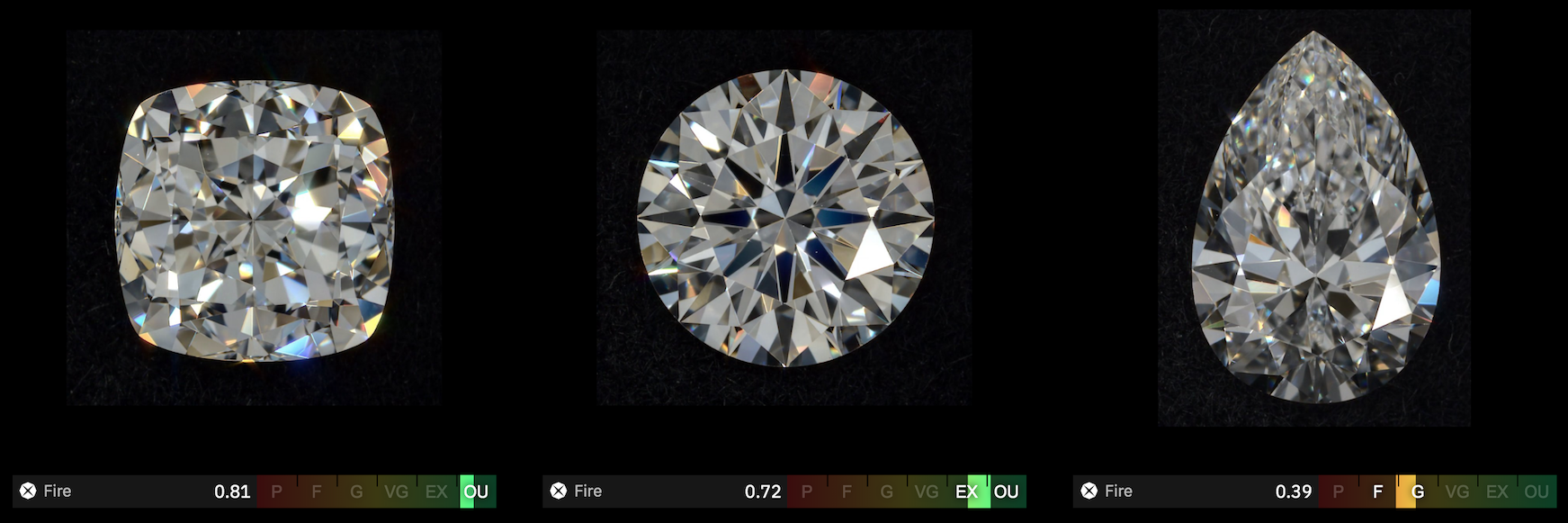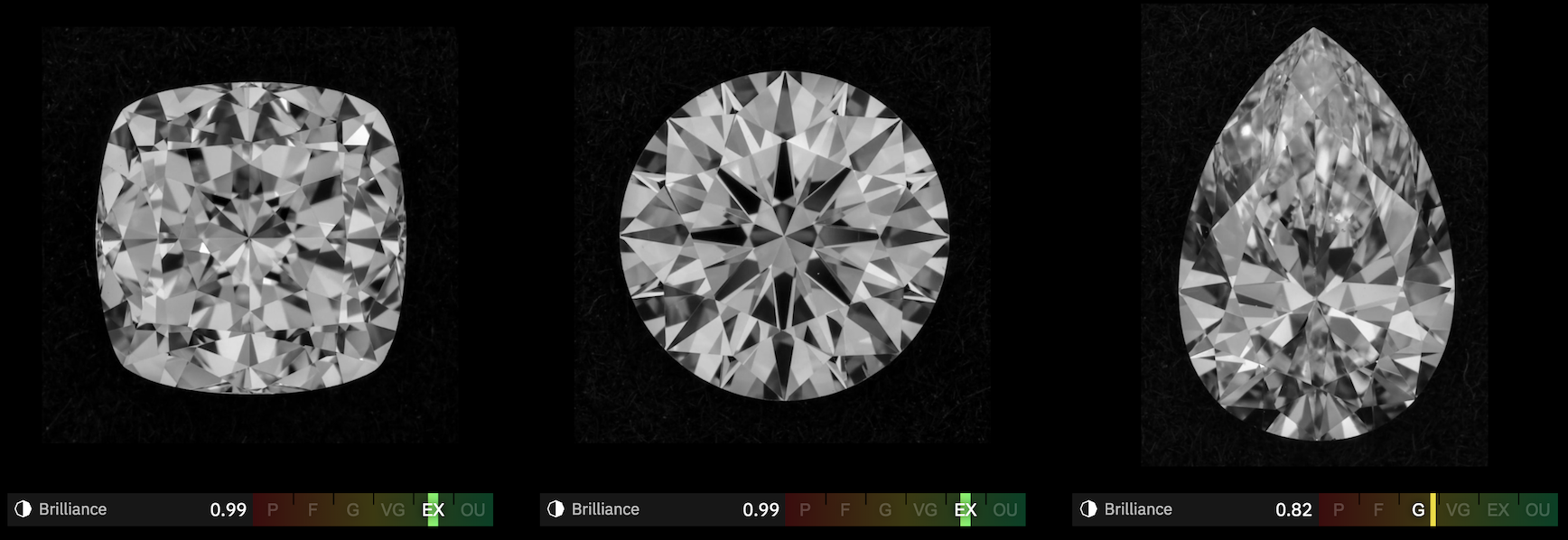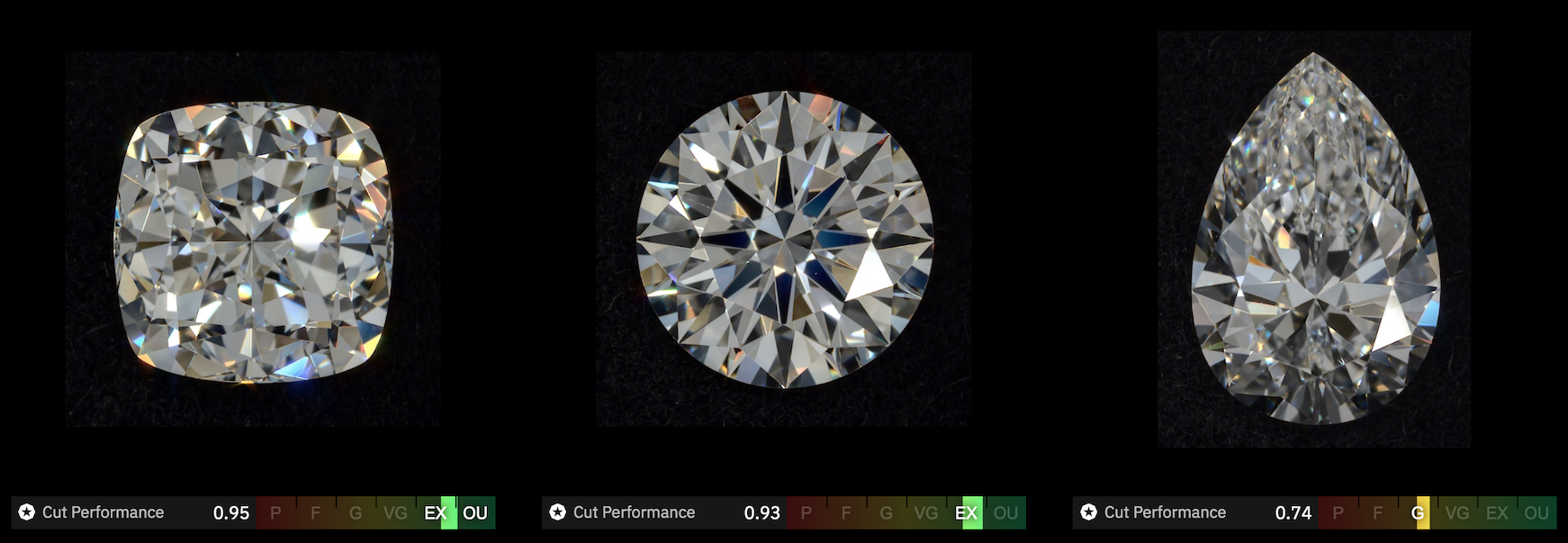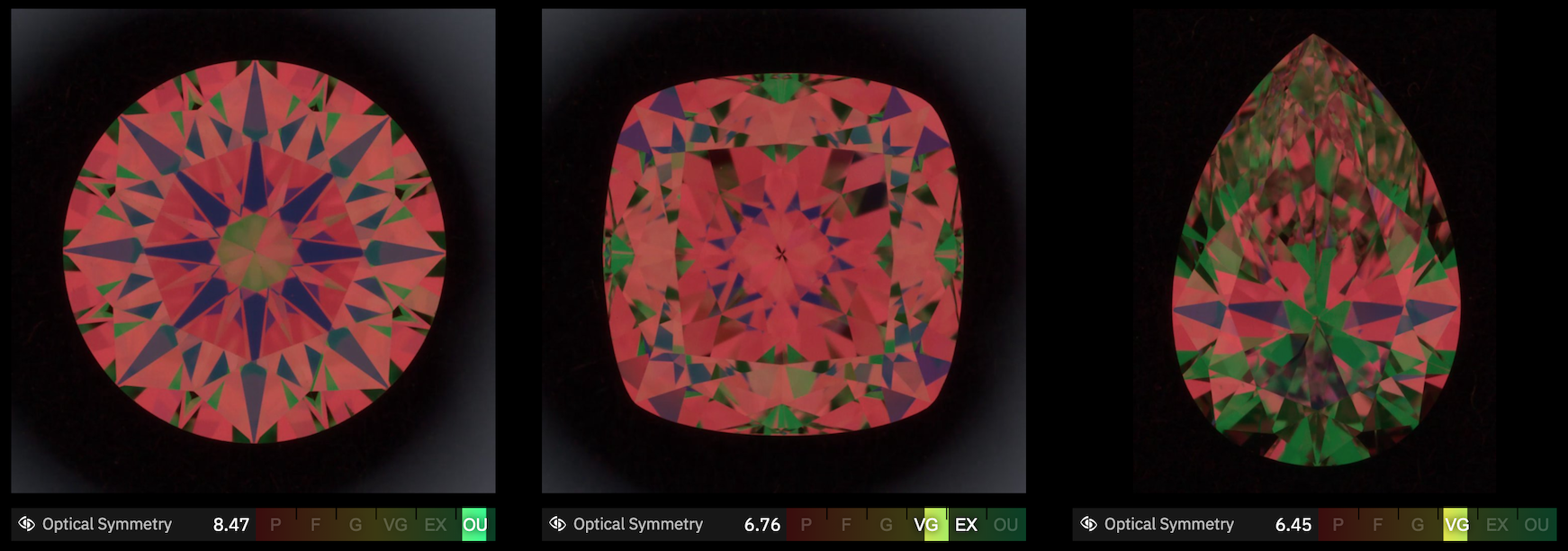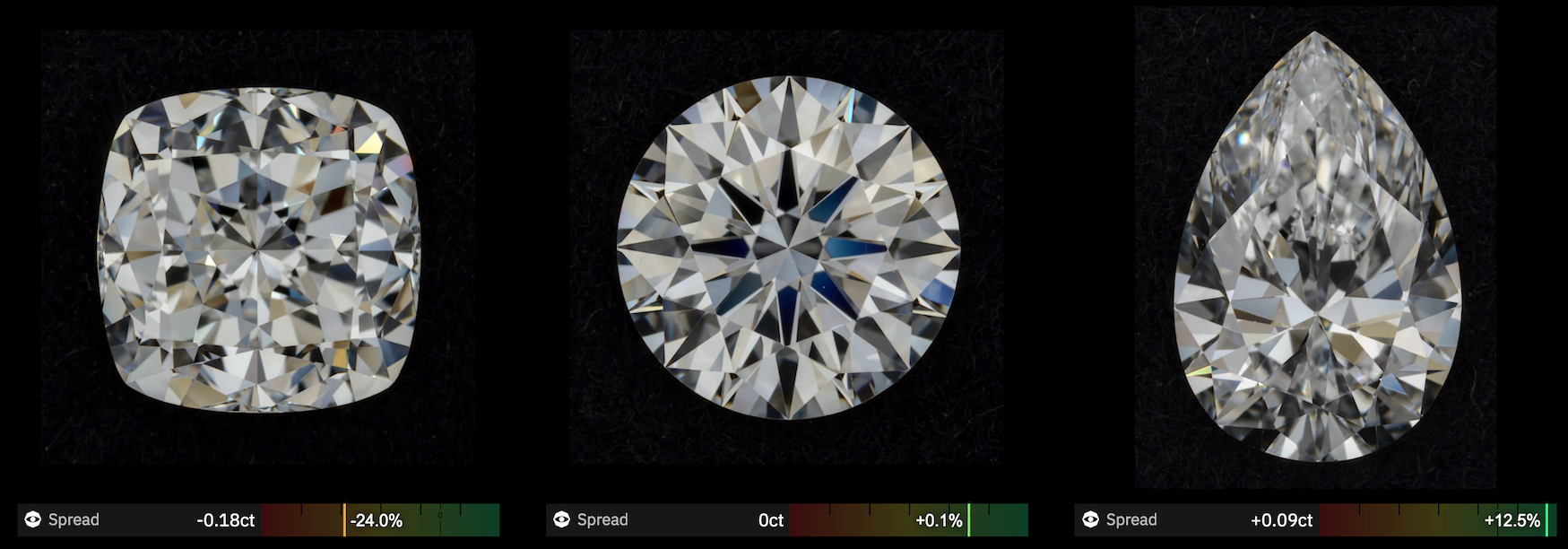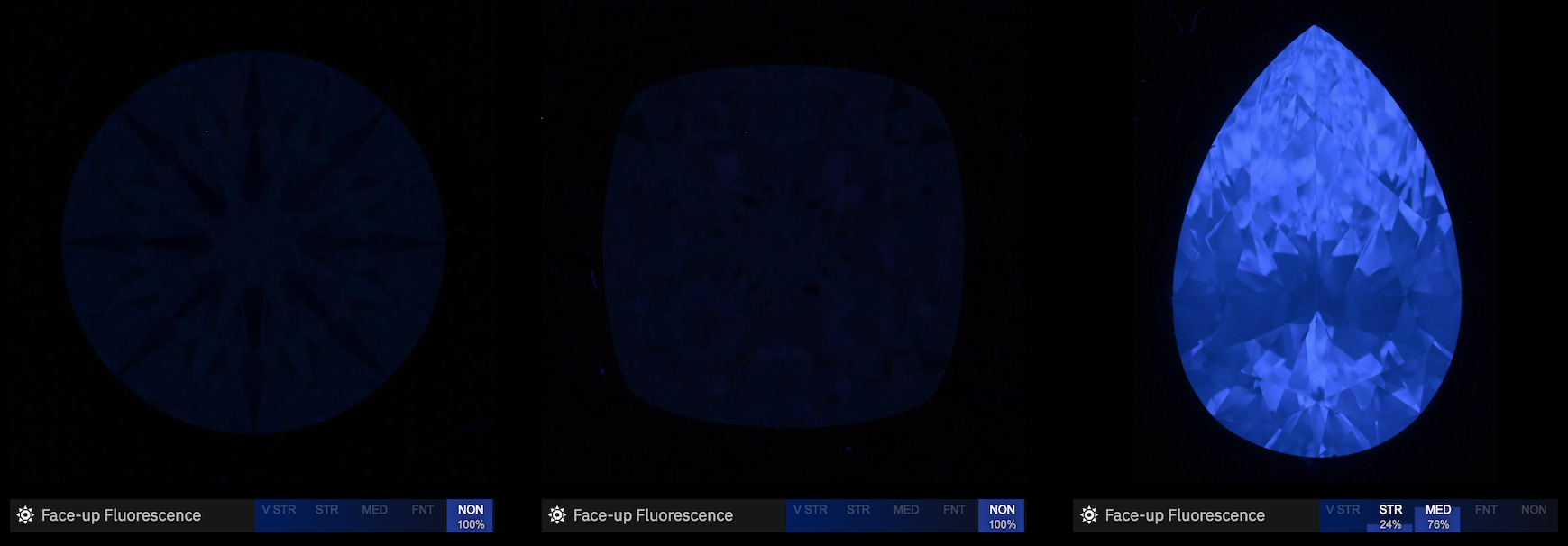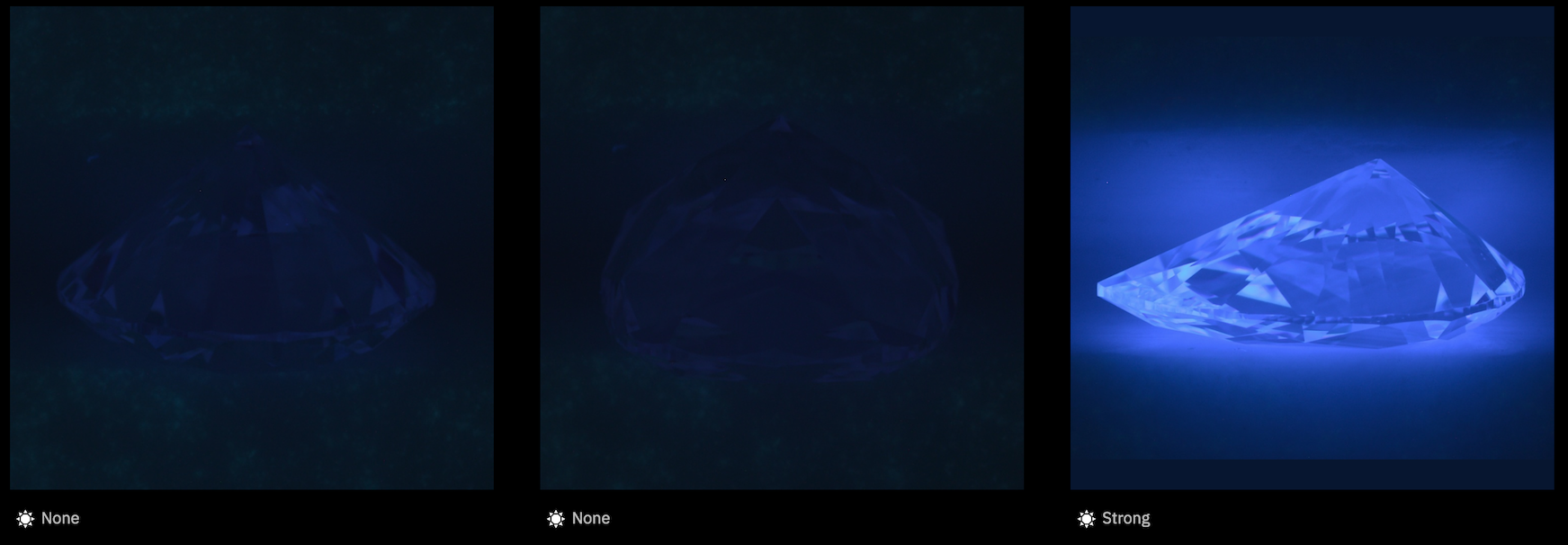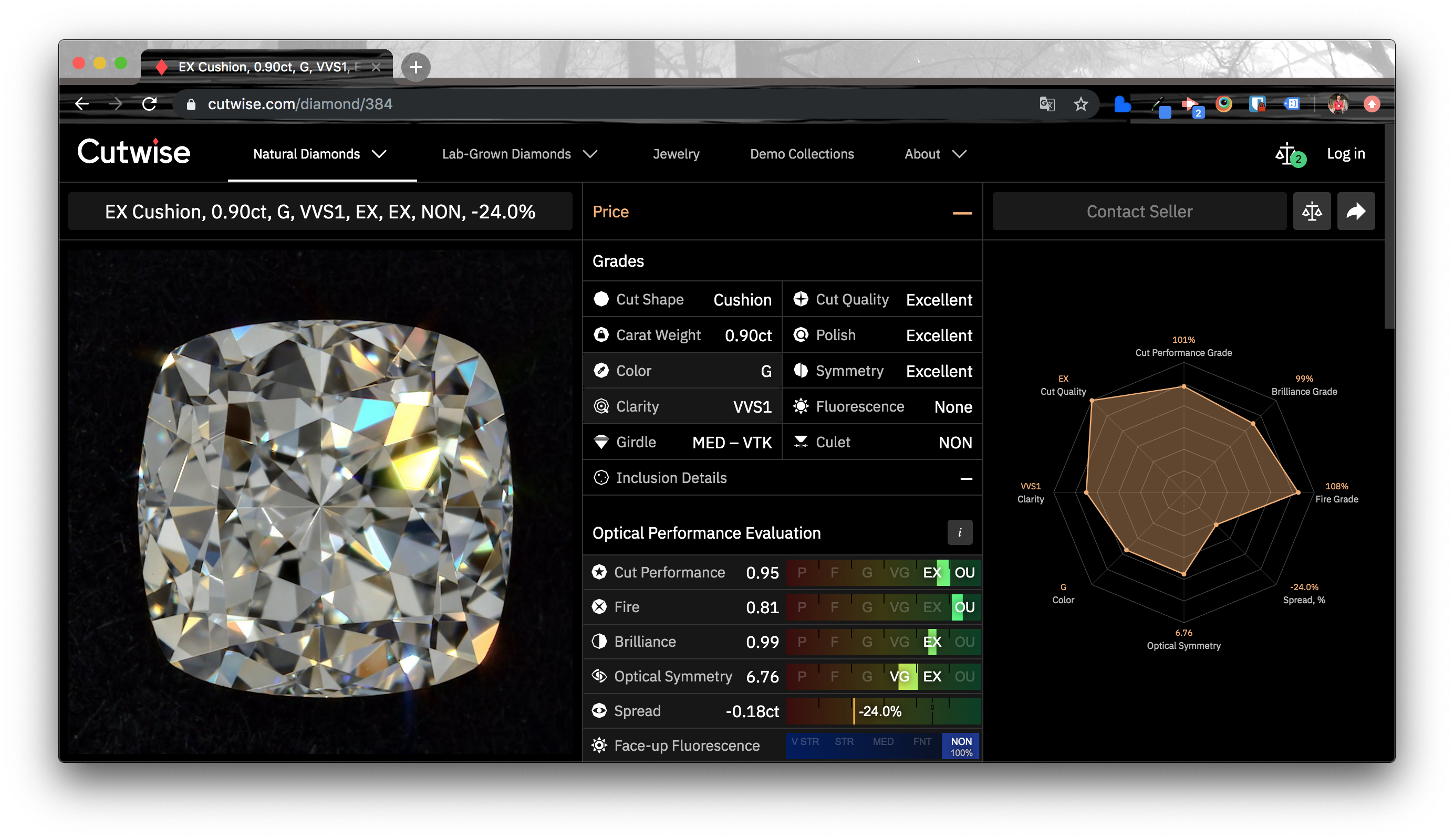Often diamond beauty could be described in terms of the following phenomena:
Fire
- Brilliance
- Symmetry
- Fluorescence
- Size
Quantitative description of these phenomena is what we call Optical Performance Evaluation.
Our technologies and algorithms allow to capture videos and automatically calculate Optical Performance Evaluation:
- Based on human perception, including stereo vision.
- Allow to compare different shapes.
- Consider diamond size (as in real life).
Fire
Fire is colored flashes that we observe in colorless diamond. Perceived Fire strength depends on colored flashes quantity, size, duration, brightness, saturation and distribution.
Fire is the simultaneous (local) contrast of colour that is observed in a diamond. The contrast of this coloured image depends on surrounding areas and on the duration of a coloured flash.
If the coloured flash is too fast the eye is not able to comprehend its colour and such a flash is perceived as scintillation. If the coloured flash lasts too long its total contrast is less than the sum of the contrast of two separate shorter coloured flashes of half the lifetime of the initial flash.
For a flash to be perceived as coloured it should not be neither too fast, too small or too bright; when combined these factors make a coloured flash appears to a human as scintillation and not a fire flash.
Read more on Fire and other optical performance in our Australian Gemologist article "How diamond performance attributes: Brilliance, Scintillation and Fire depend on human vision features":
Brilliance
Diamond brilliance is an illusion caused by the fact that the perceived brightness of the object significantly exceeds its actual brightness. This may occur when several parts of the object with different brightness are observed within a single space-time domain. In the case of a diamond, these parts are its virtual facets. Two virtual facets belong to the same space-time domain when an observer can not separate them due to spatial or temporal limitations of the sense of vision.
Cut Performance
Cut performance is an aggregate diamond characteristic, based on both fire and brilliance. It shows how vibrant the diamond is.
Optical Symmetry
Optical symmetry shows how symmetric diamond looks when viewed face-up. Score is calculated from crown (ASET) image for fancy shapes and crown (ASET) and pavilion (Hearts) images for round shapes.
Spread
Diamond with the same weight can have different visible size depending on their shape. This visual size is described by spread characteristic. Positive spread means that diamond looks larger than Tolkowsky round with same weight, negative means opposite.
Fluorescence
Face-up Fluorescence score show percentages of diamond area that belongs to different fluorescence grade for diamond image taken face-up in UV 385nm light.
Pavilion Fluorescence images are similar to ones that are used in laboratories to grade fluorescence. They are captured under UV 385nm light.
Optical Performance Scores in Cutwise
Scores Description
Absolute score (value)
Shows absolute characteristic of diamond (how much fire or brilliance is it).
Relative score (grade)
Valid for Spread, Fire, Brilliance and Cut Performance. Shows comparison to standard Tolkowsky round with the same visual area. For example:
Fire absolute = 1.4
Fire Score for Tolkowsky with same area 1.5
Relative = 1.4/1.5 = 0.93
Grade is calculated from Relative score. Grade marker width shows value accuracy.
